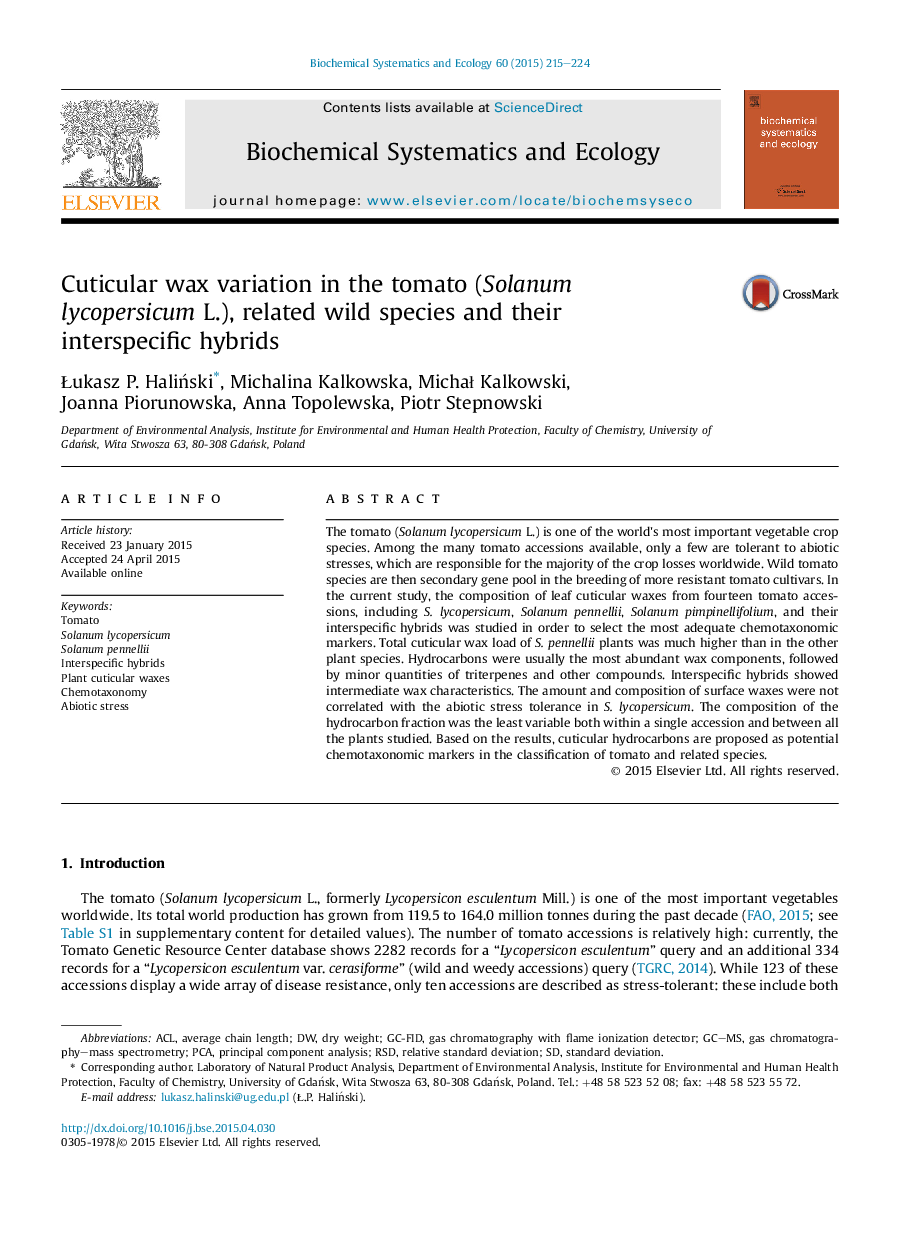| Article ID | Journal | Published Year | Pages | File Type |
|---|---|---|---|---|
| 7768189 | Biochemical Systematics and Ecology | 2015 | 10 Pages |
Abstract
The tomato (Solanum lycopersicum L.) is one of the world's most important vegetable crop species. Among the many tomato accessions available, only a few are tolerant to abiotic stresses, which are responsible for the majority of the crop losses worldwide. Wild tomato species are then secondary gene pool in the breeding of more resistant tomato cultivars. In the current study, the composition of leaf cuticular waxes from fourteen tomato accessions, including S. lycopersicum, Solanum pennellii, Solanum pimpinellifolium, and their interspecific hybrids was studied in order to select the most adequate chemotaxonomic markers. Total cuticular wax load of S. pennellii plants was much higher than in the other plant species. Hydrocarbons were usually the most abundant wax components, followed by minor quantities of triterpenes and other compounds. Interspecific hybrids showed intermediate wax characteristics. The amount and composition of surface waxes were not correlated with the abiotic stress tolerance in S. lycopersicum. The composition of the hydrocarbon fraction was the least variable both within a single accession and between all the plants studied. Based on the results, cuticular hydrocarbons are proposed as potential chemotaxonomic markers in the classification of tomato and related species.
Keywords
Related Topics
Physical Sciences and Engineering
Chemistry
Organic Chemistry
Authors
Åukasz P. HaliÅski, Michalina Kalkowska, MichaÅ Kalkowski, Joanna Piorunowska, Anna Topolewska, Piotr Stepnowski,
